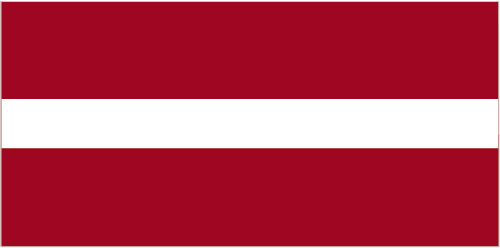
The name "Latvia" originates from the ancient Latgalians, one of four eastern Baltic tribes that formed the ethnic core of the Latvian people (ca. 8th-12th centuries A.D.). The region subsequently came under the control of Germans, Poles, Swedes, and finally, Russians. A Latvian republic emerged following World War I, but it was annexed by the USSR in 1940 - an action never recognized by the US and many other countries. Latvia reestablished its independence in 1991 following the breakup of the Soviet Union. Although the last Russian troops left in 1994, the status of the Russian minority (some 28% of the population) remains of concern to Moscow. Latvia acceded to both NATO and the EU in the spring of 2004; it joined the eurozone in 2014.
peat, limestone, dolomite, amber, hydropower, timber, arable land
arable land: 17.96%
permanent crops: 0.11%
other: 81.93% (2011)
2,165,165 (July 2014 est.)
country comparison to the world: 144
Latvian 61.1%, Russian 26.2%, Belarusian 3.5%, Ukrainian 2.3%, Polish 2.2%, Lithuanian 1.3%, other 3.4% (2013 est.)
Lutheran 19.6%, Orthodox 15.3%, other Christian 1%, other 0.4%, unspecified 63.7% (2006)
Latvian (official) 56.3%, Russian 33.8%, other 0.6% (includes Polish, Ukrainian, and Belarusian), unspecified 9.4% (2011 est.)
definition: age 15 and over can read and write
total population: 99.8%
male: 99.8%
female: 99.8% (2011 est.)
Riga
parliamentary democracy
4 May 1990 (declared); 6 September 1991 (recognized by the Soviet Union)
Independence Day, 18 November (1918); note - 18 November 1918 was the date Latvia declared independence from Soviet Russia and established its statehood; 4 May 1990 was the date it declared its independence from the Soviet Union